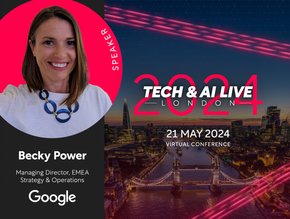How a Hybrid Cloud Approach Offers the Best of Both Worlds

Driving growth and innovation, moving to the cloud remains a long-term priority for businesses today. But when it comes to choosing a cloud model, organisations have a pivotal decision to make.
The choice between private and public cloud models is a critical one for businesses, each offering distinct advantages and challenges that align with varying organisational needs, strategies and resources. Understanding these models is essential for making informed decisions.
As explained by Amazon Web Services (AWS), in a private cloud, a single organisation controls and maintains the underlying infrastructure to deliver the IT resources. In a public cloud, external cloud providers deliver the resources as a fully managed service.
Public versus private cloud: The key factors
When exploring cloud adoption, businesses must first align their decision with their overarching objectives and consider cost as much as efficiency and security.
“Public cloud services, with their scalability and flexibility, are ideal for organisations seeking quick access to resources, especially for smaller projects with variable workloads,” comments Dan McConnell, SVP, Product Management and Enablement at Hitachi Vantara. “On the other hand, a private cloud offers dedicated resources and heightened security, making it suitable for industries with stringent compliance requirements.”
As McConnell explains, data sensitivity and compliance are also important factors in the decision-making process. “Public clouds may raise concerns about data security and compliance, leading organisations in regulated industries to opt for the control and privacy provided by private clouds.
“The need for flexibility and innovation guides businesses towards public clouds, fostering rapid development and deployment. In contrast, private clouds provide customisation and control.”
According to Grant Caley, Partner CTO for UK & Ireland at NetApp, the primary factor for deciding to run an application in either a private or public cloud is what the intended use case is. “For example, if you want to leverage generative AI (Gen AI) and one of the hyperscalers offers that as a service, then hosting your data in the cloud is a good option. This will give you quick access to technologies and capabilities that aren’t practical to replicate on premise. Conversely, you may already have a predefined environment that's virtualised, so building your own private cloud on premise is the easiest option.”
The decision between public and private cloud adoption is driven by several factors. Paramount among these considerations, says Dean Clark, Chief Technology Officer at GFT, is the balance between data security, regulatory compliance and operational control.
“In the past, private cloud solutions, providing more bespoke configurations, appealed to enterprises navigating stringent regulatory frameworks or seeking heightened control over their data environments,” Clark explains.
“Conversely, the allure of public clouds lie in their dynamic scalability and perceived cost-efficiency, offering a compelling option for organisations navigating variable workloads and seeking to optimise expenditure. Additionally, nuanced factors such as performance requirements, the availability of specialised IT skill sets, and the willingness to embrace large scale change are notable influences.”
Hybrid cloud is the best of both worlds
Hybrid cloud models integrate private and public cloud infrastructures, allowing businesses to leverage the best of both worlds. A combination of public and private cloud, the hybrid cloud market is expected to reach US$145bn in 2026, due to the flexibility provided by balancing data between public cloud, private cloud and on-premises.
According to a Hitachi Vantara survey, 79% of UK organisations admit that a hybrid cloud operating model, with its mix of on-premises private cloud and third-party public cloud services, is the right one for their next five-year journey.
“Hybrid clouds are IT infrastructure architectures that combine linkage between public and private cloud architectures,” McConnell comments. “These hybrid architectures seek to enable the best of both worlds with intelligent data fabrics, software defined networking technologies and hybrid management planes that meld these disparate infrastructure solutions together with simplified hybrid users of the hybrid cloud can, therefore, interact with it as if it were one seamlessly unified architecture.”
“People think of hybrid cloud in one of two ways,” identifies Caley. “In an ideal scenario, it means building an application that sits across both on premise and public cloud. The reality is that most people are yet to achieve this. Instead, what is often meant when we talk about a hybrid cloud model is being able to build applications and choose either private or public cloud to deploy them in.
“A large majority of customers that I talk to are using this kind of hybrid cloud model, using at least one of AWS, Azure, or Google, as well as their own on premise private cloud. The main benefit of this is the flexibility to prioritise the requirements for each specific project, whether it’s agility, cost, security or access to services that are available in the public cloud.”
As Umashankar Lakshmipathy, EVP and Co-Head of Cloud and Infrastructure Services (CIS) at Infosys, describes, a hybrid cloud approach leverages the strengths of both private and public models, while mitigating their respective limitations.
“In this model, workloads – typically called systems of records, i.e., applications that do not undergo rapid change and/or have a predictable growth or capacity requirement or are custom-developed – remain on-premise on a private cloud.”
“Almost all organisations – with the exception of companies born in the cloud – follow a hybrid approach with a varying percentage of their environment split between public and private clouds,” adds Lakshmipathy.
“Leveraging this workload-centric approach where each workload is analysed to identify whether it is best suited for a private or public cloud, offers the right balance to utilise the strengths of each of these options and thereby minimising risk.”
Adapting to emerging trends
In an increasingly data-rich and AI-enabled world, organisations need to be vigilant in adapting to emerging trends and making informed decisions that align with their business objectives and technological advancements.
“One trend that has emerged recently is the opportunity to create a unified architecture to efficiently manage both public and private cloud challenges,” McConnell says. “This data platform addresses all environments, managed by a single AI-enabled software stack, enabling businesses to run applications anywhere – on-premises or in the public cloud.
“By eliminating infrastructure silos, businesses are empowered to build a data foundation that enables them to consume the necessary data when and where they need it. This approach allows organisations to optimise their cloud journeys and avoid costly pitfalls that hinder their digital transformation success.”
As cloud technologies evolve, Caley explains that public cloud services are always going to be the first to innovate and offer the latest features. “The hyperscalers have the agility and resources to develop new products and get them out there quickly. The great thing for customers is they can trial these new technologies as soon as they're available without having to go through procurement processes or adding skills.
“For example, the hyperscalers now offer a range of Gen AI services at a time when most companies simply don’t have the capability to run these themselves,” he concludes. “Organisations that have invested in intelligent data infrastructure are at an advantage here. They can make their data rapidly available to different services offered by public cloud providers making it easier to innovate at speed.”
******
Make sure you check out the latest edition of Technology Magazine and also sign up to our global conference series - Tech & AI LIVE 2024
******
Technology Magazine is a BizClik brand







